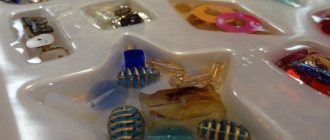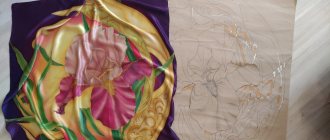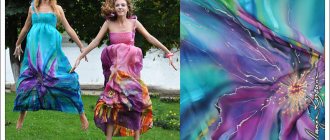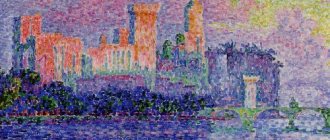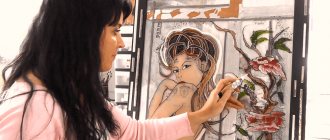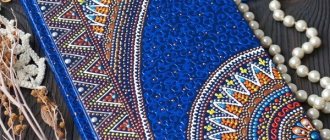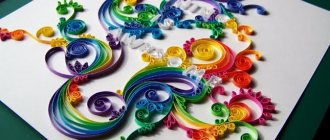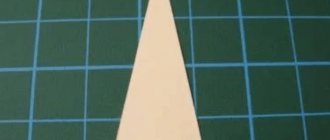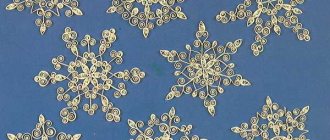History of the fishery
The first official mentions of the region were found in the Spiritual Charter of Kalita, dating back to 1328, but it has been proven that Gzhel settlements existed and were actively engaged in various crafts back in the 11th century, although pottery was not included in the official list of duties before the sovereign’s court. The region became the main supplier of Gzhel clay and finished products for “pharmaceutical needs” only in the 17th century under Tsar Alexei.
The main difference between Gzhel painting is its originality and individual style. At the beginning these were molded toys and household items with beautiful and bright majolica, but gradually the art and craftsmanship developed and became more perfect. Decorative dishes and sets of dishes, tall kumgans with a disc-shaped body appeared. Small plastic arts in the form of kitchen utensils and toys have also become widespread, captivating with their simple drawings and pictures, landscapes, and floral patterns.
Since the 19th century, the production of semi-faience has been established on the territory of Gzhel, which became a transition period from traditional majolica to fine faience and porcelain. The decoration used was characteristic underglaze painting in rich blue shades, monochrome drawings, polychrome overglaze drawing, an abundance of gold and a unique cobalt background covering.
Particularly famous were the products produced at the factories of the Terekhovs, Barmins, as well as the Kuznetsov Brothers, Kiselevs, Zhadins, and Tulins.
Gzhel painting presentation on drawing on the topic
Slide 1
Gzhel painting Completed by: Dyachkova Svetlana Aleksandrovna, 541 gr., PMDO Chelyabinsk 2010
Slide 2
Plan History of the craft Technology of ceramics production Dictionary Distinctive features of Gzhel painting Crossword Lesson summary for children in the preparatory group
Slide 3
1. History of the fishery. The oldest mention of Gzhel was found in the will of Ivan Kalita dated 1328. Gzhel was later mentioned in the spiritual letters of other princes and in the will of Ivan the Terrible in 1572-1578. It all started with clay. Nature itself has endowed this area: here is the Gzhel-Kudinovskoe deposit of fatty refractory clays. It is underground, and on its surface there are small hamlets and villages. But how much do our handy people need - there is clay, there are hands - that’s great! Widespread mining of different types of clay was carried out in Gzhel from the middle of the 17th century. In 1663, Tsar Alexei Mikhailovich issued a decree “to send clay to the Gzhel volost for apothecary and alchemical vessels, which clay is suitable for apothecary vessels.” In 1770, the Gzhel volost was entirely assigned to the Apothecary Order “for alchemical utensils.”
Slide 4
In the 18th century, Mikhailo Lomonosov, who was looking for the secret of porcelain and who appreciated Gzhel clays, wrote such sublime words about them: “There is hardly any earth in the world that is the purest and without any admixture, which chemists call virginity, except among the clays used for porcelain, This is our Gzhel, which I have never seen anywhere with a more beautiful whiteness.” Until the middle of the 18th century, Gzhel made pottery that was common for that time, made bricks, pottery pipes, tiles, as well as primitive children's toys, supplying Moscow with them.
Slide 5
By 1812, there were 25 factories producing tableware in Gzhel. In addition to dishes, toys in the form of birds and animals and decorative figurines on themes from Russian life were made in Gzhel. Shiny white horses, riders, birds, dolls, and miniature dishes were painted with purple, yellow, blue and brown paints in a unique folk, Gzhel style. The paints were applied with a brush. The motives for this painting were decorative flowers, leaves, and herbs.
Slide 6
After 1802, when light gray clay was found near the village of Minino, the production of semi-faience arose in Gzhel, from which kvass, kumgans and jugs were made in large numbers. Since the second half of the 20s of the 19th century, many products were painted only with blue paint. Semi-faience was distinguished by its rough structure and low strength. Around 1800, in the village of Volodino, Bronnitsy district, peasants, the Kulikov brothers, found a composition of white earthenware. The first porcelain factory was founded there around 1800-1804. Pavel Kulikov, its founder, learned the technique of making porcelain. Wanting to keep the secret of porcelain production, Kulikov did everything himself, having only one worker, but, according to legend, G. N. Khrapunov and E. G. Gusyatnikov secretly entered Kulikov’s workshop, copied the forge (oven for firing products) and took possession of clay samples , after which they opened their own factories. The Kulikov factory is remarkable in that it originated the Gzhel porcelain production.
Slide 7
The second quarter of the 19th century was the period of the highest artistic achievements of Gzhel ceramic art in all its branches. In an effort to produce fine earthenware and porcelain, production owners constantly improved the composition of the white mass. Since the middle of the 19th century, many Gzhel factories have fallen into disrepair, and ceramic production is concentrated in the hands of the Kuznetsovs, who once came from Gzhel. After the revolution, the Kuznetsov factories were nationalized.
Slide 8
Only in the middle of the 20th century did the restoration of the fishery begin in Gzhel, which recently celebrated its 650th anniversary. In the 1930s and 1940s, almost half of all porcelain and earthenware enterprises in Russia were concentrated here. In 1912, a station was opened on the Kazan Railway on the Moscow-Cherusti branch, which was named after the area “Gzhel”. The urban-type settlement that grew up near the station is also called “Gzhel”.
Slide 9
All pottery craft in Russia has deep historical traditions. Many crafts remain famous today. One of the first places is occupied by Gzhel - the largest ceramic industry in terms of production scale. Gzhel is an ancient village on the banks of the Gzhelka River, located in the Ramensky district of the Moscow region, 60 km from Moscow. The richest clay deposits are located here today. The village got its name from the word “zhgel”, i.e. “burn” or “burn” - all these are words from the vocabulary of ancient potters.
Slide 10
2.Ceramic production technology. Now the technological chain is built like this: Molding (casting in plaster molds) – Drying – Manual inspection – Control for cracks – Firing (electric furnace) – Painting workshop. Behind these “production” words lies the secret of the creation of Gzhel products and the work of many people: incl. technology masters, sculptors, foundry workers, ceramic artists! Gzhel clay has special qualities: high plasticity and refractoriness. She's fat, that is. there is little sand in it. The accumulated clay undergoes thorough primary processing: freezing, elutriation, kneading. Clay is a living material!
Slide 11
3. Dictionary: Porcelain is a product of fine ceramics, impermeable to water, usually white, ringing, translucent in a thin layer. Porcelain raw materials: kaolin, plastic clay, quartz and feldspar. And the proportion of components is a secret! Porcelain is usually produced by high-temperature firing. Faience is a product of fine ceramics, dense and finely porous. It differs from porcelain in its greater porosity and water absorption, which is why all earthenware products are covered with a thin continuous layer of glaze. Earthenware raw materials: 60-65% plastic materials (kaolin, clay); 30-36% quartz; 3-5% feldspar. Faience is produced by three-stage firing: biscuit (t-1250˚), glaze (t-1100˚) and pattern-fixing (t-700-900˚). Ceramics are products made from baked clay. Majolica is artistic ceramics, i.e. covered with opaque glaze. Kvasnik is a jug with a hole in the center. Kumgan is a vessel in which in ancient times drinks were served on the festive table. Kumgans are jugs that look like a bird with a rounded body, a flat, curved nose and a tail handle.
Slide 12
4 . Distinctive features of Gzhel painting. Any Gzhel painting is pleasant to look at; Gzhel motifs can be seen not only on porcelain, but also on paintings, embroidered and painted, and on clothes, on bed linen, and even in the interior, for example, painted fireplaces.
Slide 13
How is it different from other paintings? The signature color of Gzhel painting is juicy blue, bright blue, cornflower blue, the color of sky and water. Just one paint – blue on a white background, and the picture comes to life, and blue tints appear from dark to blue, depending on the pressure of the artist’s brush. The artist has only one paint, cobald, which turns it blue. It is diluted with water and the work is covered with strokes and lines.
Slide 14
The most favorite pattern is the Gzhel rose. Sometimes it is depicted large, with broad strokes. And sometimes it is written with a thin brush. Then we see a bouquet of several roses. The flowers are scattered all over the surface. It also happens: there is no rose itself, there are only its petals. They also decorate porcelain with strange birds and scenes from people’s lives.
Slide 15
Many works of Gzhel are unique and the plot depends on the master and his skill, and of course they are done by hand, so you won’t find exactly the same one. But of course there are characteristic elements, and these are the ones that are taught in every school in art class.
Slide 16
Gzhel painting is divided into three types: 1. The main one is plant painting - grass, cereals, berries, twigs, leaves, bouquets and garlands of flowers. In addition to roses, poppies, dahlias, lilies, peonies, asters, carnations, and daisies are depicted. Their form is a little conventional. 2. Ornamental. First of all, these are checkerboards - several rows of blue and white squares along the side and a tie-down belt also along the side. Artists also painted the famous Gzhel grids - “combs” (in the form of a spruce), “droplets”, “pearls”, “antennae”. Using a brush with hard bristles, a marbled pattern is applied. It fills the space inside, for example, wavy lines, or circles at the bottom of a plate.
Slide 17
3. Plots. This is nature and the seasons. These are scenes of city life, rural landscapes and everyday life, etc. These are characters from Russian fairy tales: Blue Birds, Polkans, Sirin's birds, various Mermaids, Bayun Cats, etc.
Slide 18
The main secret is the strokes. A smear is a generic sign of Gzhel. The main technique is the correct ratio of blue and white or the combination of “the whiteness of the snow-covered fields of the Moscow region and the transparent blue of the clear sky.”
Slide 19
Another rule is that each subsequent stroke is different from the previous one. First, paint is applied thickly to the brush. Next, with different pressure, lay out the flower with a brush. The first strokes are the most juicy, but as they decrease they become lighter. The round petals of the flower are either clear or softly “blurry”. This is how multi-petaled flowers are drawn. After firing, the flower becomes cornflower blue.
Slide 20
"Brushstroke with shadows." The paint is drawn onto one side of the brush and applied with a light circular turn, i.e. turns around the handle. In the thicker part of the brush there is more paint - the stroke is dark, towards the middle of the paint there is a little less - the stroke is lightened, and the thin tip leaves a very light trace. This creates a multi-colored three-dimensional rose or leaf.
Slide 21
And painting with “one brush” is achieved when a cornflower or a twig is painted with one set of paint on a brush - then the first petals will be dark, and the rest will gradually become lighter.
Slide 22
The “ABC of Strokes” is supplemented with other elements. The thin tip of the brush is used to paint the stem, tendril-curls, veins on the leaves or shading. Sometimes the blue color is painted with thin golden lines and strokes, which seem to indicate contours. But this is a matter of taste. You can't edit!
Slide 23
To paint a rose, you need a medium-wide brush. We turn it around the cutting, then from the middle of the flower we apply wide strokes of blue and light blue paint, i.e. as if we were building up the petals with broad strokes. To comprehend the “ABC of Strokes,” artists need about ~5 liters.
Slide 24
The sequence of painting a fairytale bird.
Colors of Gzhel painting
A special feature of Gzhel painting is that it is exclusively handmade; the artists put a piece of themselves and their vision of nature and the environment into each ornament.
The main colors are:
- white, used for bone china;
- colored majolica;
- shades of cobalt and royal blue, ranging from sky blue to rich, dark blue;
- dull cobalt.
The process of manifestation of the characteristic rich color is very interesting - during work it is black and white, and blue and cobalt shades appear only when the finished product is fired at high temperatures.
Primary colors
The traditional color for Gzhel painting is a bright blue, cobalt shade on a snow-white background. Painting is carried out using a special composition based on cobalt oxide. The finished product is dipped in white glaze and then fired at 1400 degrees. As a result, the glaze becomes transparent, and the ornament acquires a bright blue color; the product itself becomes hard and has a glossy shine. Fine gold decoration or platinum can be applied over the fired glaze, after which the product is fired again.
The following groups of colors of Gzhel painting are distinguished:
- Overglaze color painting, complemented by gold and platinum decor, cobalt color. Used for elegant sets of dishes, souvenirs, jugs or teapots. Bright colors and overglaze painting, also known as majolica, are used for the work. The process is labor-intensive and complex, requiring real skill from the artist.
- The dull background cobalt captivates with its unusual combination of sophistication and solemn luxury. The background is a dark blue glaze; white overglaze paint is used for painting, creating a mirror image of traditional Gzhel. Flowers and animals turn from blue to white, and the ornament itself resembles fairy-tale frosty patterns, creating the effect of depth.
- Bone white china is a product that is snow-white in color without decoration or has fine platinum or gold painting. It is allowed to apply small drawings and inscriptions using colored paints or all shades of blue.
Gzhel painting: basics of technology
All the beauty of this design is achieved through mixing 2 colors, which allows you to get a large number of shades between pure royal blue and dazzling white. At the same time, the technology involves both contrasting transitions, stretching through shading, and even almost complete darkening of blue to black. All this is done by changing brushes, pre-mixing shades, and even combining them on the pile at the same time.
- The difficulty of Gzhel painting is mastering brush movements. The width and density of the stroke, the thickness of the paint layer on each part of the pile, its direction - there are no minor nuances here. Therefore, all beginners need to first work out the basic elements, where gradually, step by step, new and new techniques are added.
- The “cut-off spot” also plays a significant role. If you analyze the drawings made using this technology, you will notice that the shades are arranged in the composition according to a certain pattern. This is an almost smooth transition from a clean, light spot (which is the center of the picture), to dark edges, towards which the saturation and depth of color intensify. The opposite option is also quite possible, when small details along the edges disappear into an illuminated haze, and large central elements, on the contrary, are dark and dense.
It is important to remember that the elements of Gzhel painting are always accompanied by smoothness, softness, roundness of lines, ease of shade transitions, even if they have a contrasting joint (there will always be a slight stretch in it), and small details along the edge.
Elements and patterns of Gzhel painting
The theme of the painting reflects the master’s perception of the world around him; this is the result of the development of centuries-old folk art, absorbing traditions and culture. Artists combine elements of icon painting, everyday scenes, and observations of nature in their creations. The most common are natural motifs, architecture: plants, birds or animals, images of peasant houses, churches or city streets.
Modern drawing themes are divided into 4 types:
- subject drawing, including seasons, landscapes;
- ornamental - traditional Gzhel mesh combs, tendrils, pearls, droplets, checkers and layers;
- plant drawings - cereals, berries, flowers, buds, grass, branches;
- animals (most often birds).
Execution technique
The main rule of the Gzhel painting technique is only manual execution of the drawing. In their work, artists use paints of white, light blue and dark blue. Blue color is used in more than 20 shades; for majolica, five colors are used - white background, yellow (antimony salts), green (copper salts), blue (cobalt salts), cherry (manganese moths) colors.
The artist's set of tools is very simple: a glass palette for mixing shades, brushes of various types, spatulas, jars for a mixture of cobalt oxide. The classic cobalt pattern is applied using the underglaze technique, that is, after application, the ornament is covered with white glaze and fired. To apply ornaments, a special alphabet of strokes is used, which each master may have its own characteristics. Most of the patterns are based on a droplet stroke, which is used to depict leaves, stems, and flowers. A shadow stroke is a reverse stroke in one direction with a transition from a dark shade to a light one.
The most popular patterns are the Gzhel rose with sweeping, large strokes and the bird.
Gzhel with traditional blue painting forms a single whole of form, product and decor. The pattern emphasizes the shape, adds volume and harmony, and enlivens the cold porcelain. But it is the plastic that dictates what the ornament and its shade will be, what exactly will be expressed by the artist in the finished product.
How are the elements of Gzhel painting done?
If you look at pictures of Gzhel painting, you will notice that the main elements that are repeated in absolutely any work are strokes and lines, complemented by floral patterns. This is due to the fact that “plant” themes are the most popular direction in this technology, along with “ornamental” ones, which are necessary for the design of the periphery.
There are several basic techniques in Gzhel painting, which differ in the position of the brush, the working length of its bristles, and the direction of movement. Of these, the following are considered basic:
- "Sitchik." A brush with thin, long bristles is used, with only the tip involved. Typically, this technology is used to design small details that are ornaments of one or another element - curls, waves, etc.: the basic patterns of Gzhel painting. In this case, a pure color is usually used, without a transition between them.
- "Chinese stroke". The most interesting and most complex technique, in which both colors, or 1, are immediately applied to the brush, but with pulling along the pile, and the elements are performed continuously with this brush, while the color saturation on the surface gradually fades away. Then the paint is picked up again, and again, as the elements are removed, the paint fades, becoming softer.
- "Brushstroke with shadow." According to some sources, it is a variety of “Chinese”: the paint is also applied to a common brush, the correct proportion of blue and white is first selected, and their thickness on the pile is adjusted. The brush movements are carried out so that the blue area is always thick, saturated, has a shadow, and the light area surrounds it with a light halo, dispersing the color.
